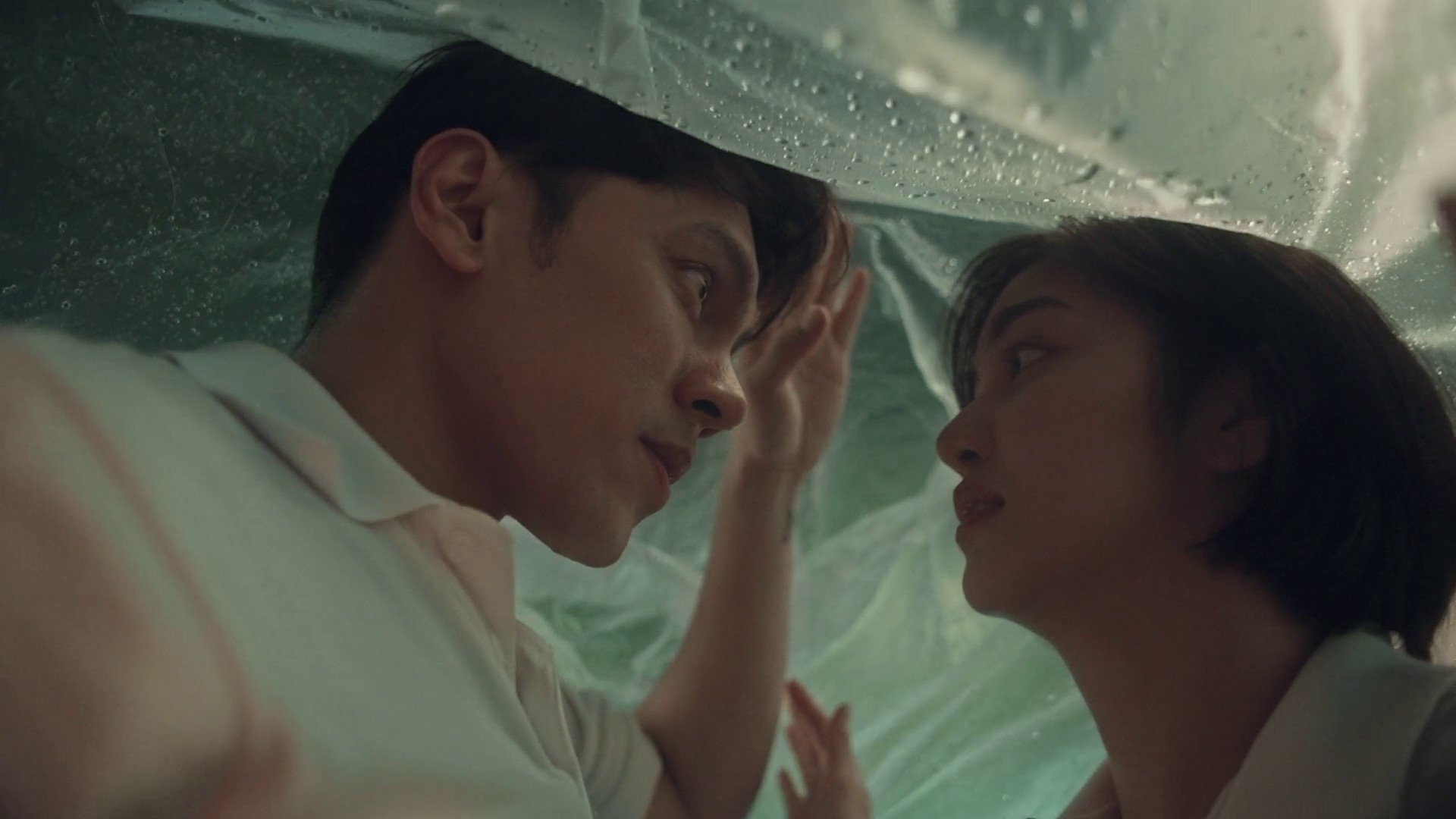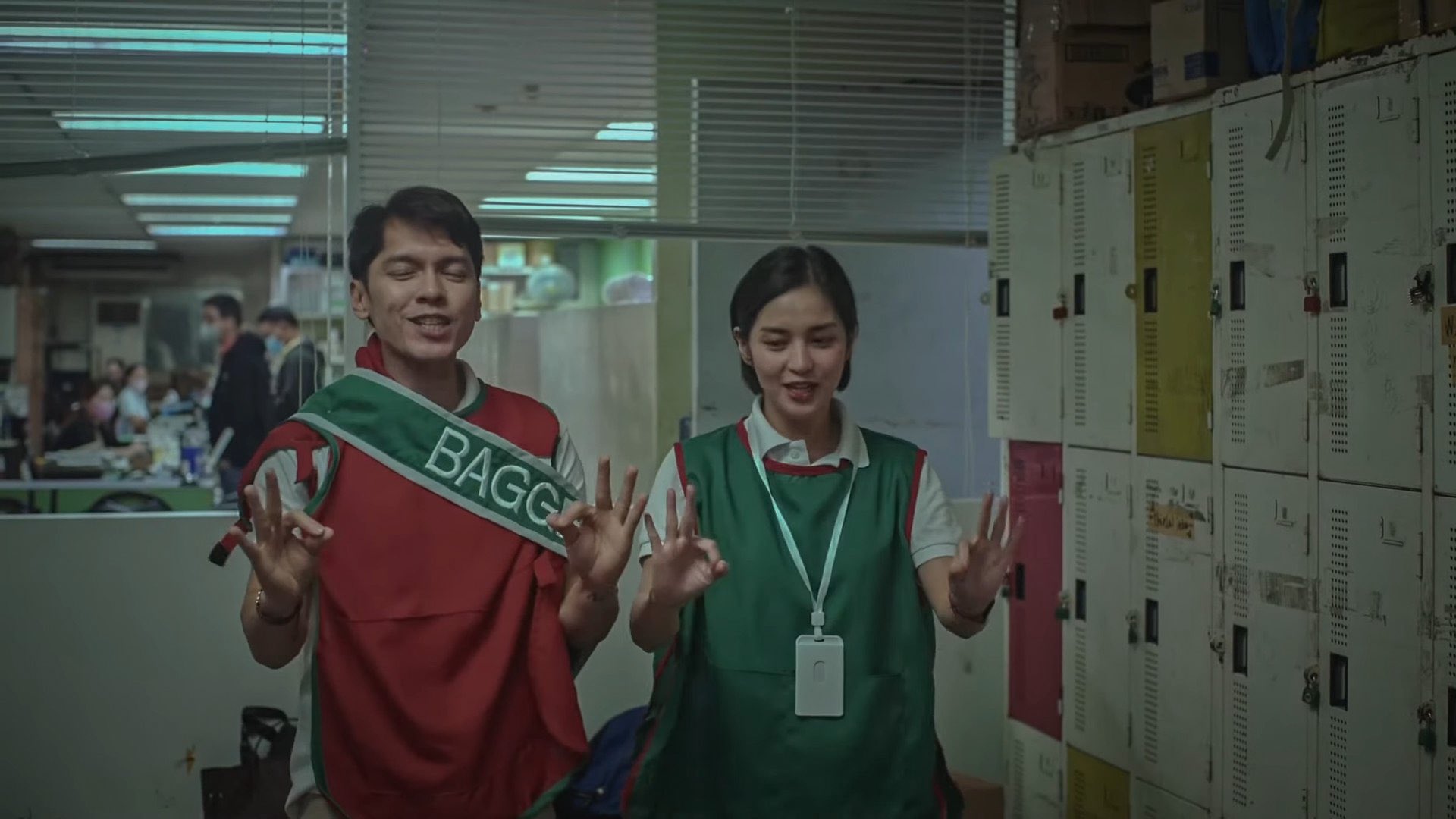AN ABUNDANCE of love, even in the scarcity of money, unfolds the grit within regular street eateries, old grocery stores and overcrowded tenements.
Third World Romance presented a tapestry of shared spaces while narrating the everyday societal challenges and economic disparities.
Directed by Dwein Ruedas Baltazar, the film seamlessly weaves the lives of its protagonists, Bree and Vin, portrayed by real-life couple Carlo Aquino and Charlie Dizon, respectively.
Third World Romance concluded the Cinemalaya Film Festival in 2023. The film is now available for streaming on Netflix.
The opening scenes did not set the tone of a typical romance film, deviating from the conventional hues of love. Bree’s perspective introduces a world painted in orange and sundown lighting, a departure from the expected vividness of romance. This aesthetic choice stems from wanting to portray the upcoming storm, a heavy tint of asphalt gray accompanied by the immersive sounds of rain and the bustling city.

As the narrative unfolds, the film slowly introduces the harsh realities of Bree’s life, picturing her in the first act in a printing shop corner surrounded by photocopies of her biodata — a seemingly antiquated yet genuine job-hunting gesture. Afterward, the COVID-19 pandemic setting was established when ayuda, or government aid, served as a lifeline for families in financially struggling households.
Bree and Vin’s first scene, which showed them lining up for aid, established a perfect setting for the emergence of a connection between strangers who share a common economic struggle. The on-screen chemistry between Aquino and Dizon begins to simmer as their characters cooped up in one umbrella and then share a meal at the near-street eatery. It becomes the stage for their initial connection—a subtle touch of shoulders, shared gazes, and a makeshift table adorned with plastic aids capturing the charm of finding love despite their circumstances.
The plot thickens within the grocery store, where packing bags and time-ins on weekdays become a labor of hope. Later on, the no-label couple are no longer strangers. The space reflected reality, revealing workers striving to make ends meet with inadequate compensation and mostly on contractual terms.
Despite their shared efforts, the main leads navigate themselves at odds over their jobs and making their love official. The grocery store becomes a microcosm of their aspirations, providing a canvas for dreams to unfold between the hum of old-fashioned machines and the absence of barcodes.

In this familiar visual set of grocery aisles—stacked baskets, customer inquiries—the couple’s subdued voices crescendo in an elaborate shot, reaching the pinnacle of their argument. As the film finally shows its central conflict, the camera makes a deliberate motion panning to Bree, capturing a blend of longing eyes and a voice pleading for forgiveness. Meanwhile, Vin, engrossed in customer service, avoids the confrontation, leaving a void where a supposed conversation could have unfolded.
The actors were commendable in conveying desperation and an answer for clarity. However, this long shot fell short. Bree returns to her cashier post, leaving both characters and viewers in a dilemma and unable to discern their dispute.
Bree and Vin’s social dispositions created conflict, as their job descriptions and needs differed. However, in the same grocery store, as the story progresses, viewers will feel the carved-out space that fosters their love amid adversity.
The housing and tenements are a visual metaphor for the holistic barriers that initially separate the characters. Vin’s community-oriented tenement sharply contrasts with Bree’s transient living situation, highlighting the disparities they must overcome.
Vulnerability wrangles within four walls—Vin is content with a family that constantly displays affection and care towards him. Meanwhile, Bree grapples with overdue bills—underscoring her economic struggles as she cries her heart out on the floor. There is a moment of silence inside the rental house where she is mostly alone, especially when her rent is due.

Those spaces mentioned are just the melting pot for Third World Romance. It successfully navigated the thin line between choosing oneself, family and love. The film offered a nuanced perspective regarding career and personal fulfillment.
The film is close to the skin, an ordinary life where the director skillfully avoided clichés, opting for a more authentic exploration of the characters’ journeys. The actors’ performances breathed life into the narrative, portraying the characters as Filipinos who continue to make ends meet in a developing country.
However, a viewer might be able to feel a weak emotional climax because the film’s strength is portraying love as a shared experience within everyday spaces, and simple spaces seem to be a lot more usual.
There was no grand gesture; there is nothing new to see in this film. Still, it catered primarily to viewers seeking a cinematic experience grounded in familiarity and realism. Bree and Vin portrayed the struggles of a young adult seeking employment, capturing shared moments and glances that make the characters relatable as they navigate life’s complexities. Again, the climax may be underwhelming and not as palpable as expected.
Above all, Third World Romance emerged as a poignant reflection of contemporary society, seamlessly blending the universal themes of family, love, and growth. It served as a memento that romance can thrive in unexpected places, a reminder that love often blooms between hardships.
Bree’s ending line, “Promise Vin, ilalaban kita!” was a binding response to Vin, applicable in various situations. This dialogue suggested that, although it may be unsustainable in the long run, the line remained a unifying force for the characters in love. Until the end, the film grounded its audience and prompted reflection on the choices made in the pursuit of finding happiness. F



